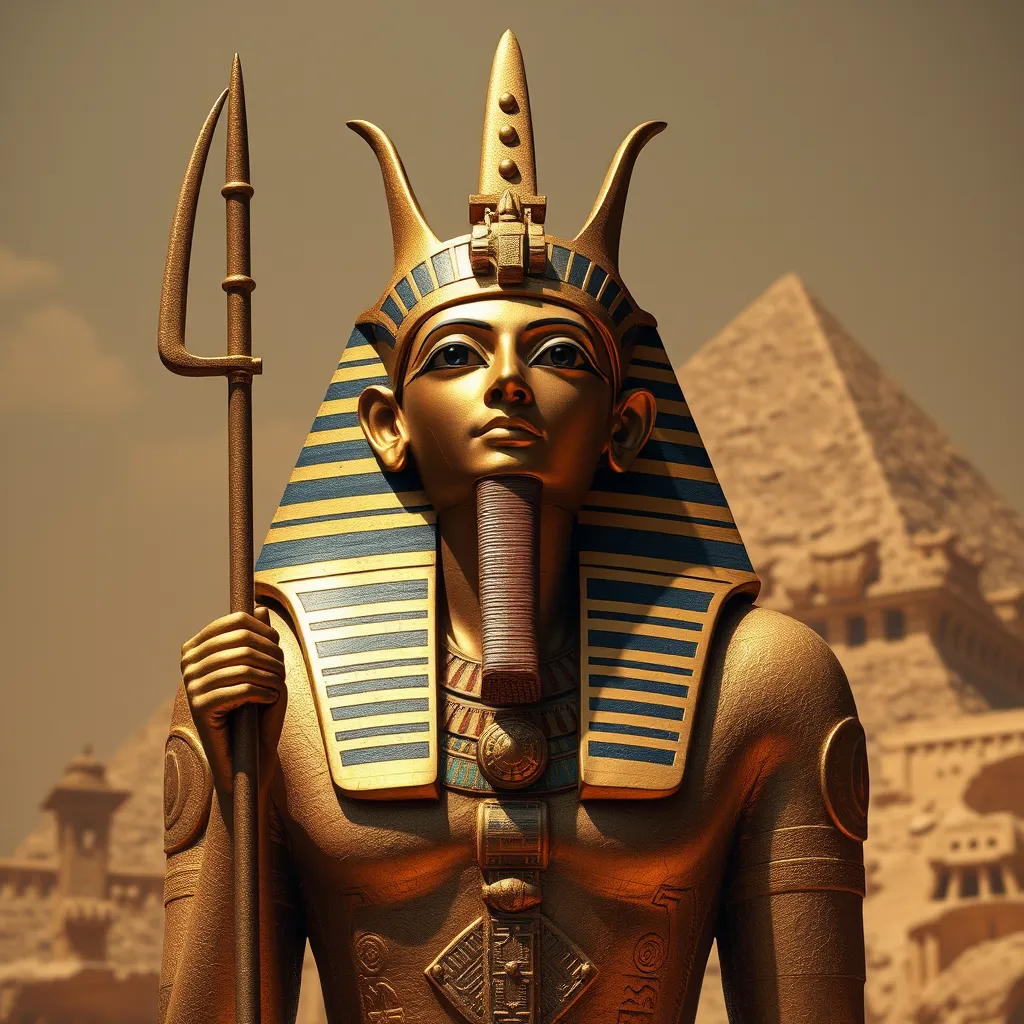The Quest for Immortality: The Ancient Egyptian Belief in the Afterlife
I. Introduction
Throughout history, the concept of immortality has intrigued various cultures, shaping their spiritual beliefs and practices. Among these, the ancient Egyptians stand out for their profound reverence for the afterlife. To them, death was not the end but a transition to a different existence, highlighting the significance of the afterlife in their society.
This article aims to explore the ancient Egyptian beliefs surrounding immortality, examining the cultural, religious, and practical aspects that shaped their understanding of life after death.
II. Historical Context of Ancient Egyptian Beliefs
The ancient Egyptian civilization flourished along the Nile River for over three millennia, from approximately 3100 BCE to 30 BCE. During this time, a rich tapestry of religious beliefs emerged, heavily influencing their views on the afterlife.
- 3100 BCE: Unification of Upper and Lower Egypt, marking the start of the Early Dynastic Period.
- 2575-2150 BCE: The Old Kingdom, known for its monumental architecture, including the pyramids.
- 2055-1650 BCE: The Middle Kingdom, which saw a resurgence of cultural and religious practices.
- 1550-1070 BCE: The New Kingdom, a period of wealth and power, leading to elaborate tomb constructions.
Key deities such as Osiris, the god of the afterlife, and Anubis, the god of mummification, played crucial roles in shaping these beliefs. Over time, the Egyptians developed complex rituals and philosophies regarding death, reflecting their evolving understanding of mortality and the afterlife.
III. The Role of Mummification
Mummification was a critical practice in ancient Egypt, aimed at preserving the body for the afterlife. The Egyptians believed that the physical body was necessary for the soul’s existence in the hereafter.
- Purpose: To prevent decomposition and ensure the body could serve as a vessel for the soul.
- Process: Involved removing internal organs, desiccating the body with natron, and wrapping it in linen.
- Rituals: Included prayers and offerings to the gods, ensuring that the deceased could navigate the afterlife.
The relationship between mummification and the afterlife was deeply intertwined, as the state of the body directly impacted the soul’s journey after death.
IV. The Book of the Dead
The Book of the Dead is a collection of spells and texts that served as a guide for the deceased in the afterlife. This ancient manuscript was integral to funerary practices, providing essential knowledge for navigating the challenges of the underworld.
- Significance: It was believed that the spells would protect and guide the soul in its journey.
- Key Spells: Included spells for protection, resurrection, and ensuring safe passage through the afterlife.
- Funerary Role: The Book of the Dead was often placed in tombs, serving as a crucial resource for the deceased.
V. The Judgment of the Dead
One of the most critical aspects of ancient Egyptian afterlife beliefs was the Judgment of the Dead, particularly the Weighing of the Heart ceremony. This ritual determined the fate of souls in the afterlife.
- The Ceremony: The heart of the deceased was weighed against a feather, symbolizing Ma’at, the goddess of truth and justice.
- Significance of Ma’at: Represented order and balance; a heavy heart indicated a life filled with wrongdoing.
- Outcomes:
- If the heart was lighter than the feather, the soul could enter the Field of Reeds, a paradise.
- If heavier, the soul was devoured by Ammit, ensuring it would cease to exist.
VI. Tombs and Burial Practices
Ancient Egyptians constructed elaborate tombs to ensure a safe passage into the afterlife. The design and contents of these tombs reflected the deceased’s status and beliefs.
- Types of Tombs:
- Pyramids: Monumental structures for pharaohs, symbolizing their divine status.
- Mastabas: Flat-roofed structures for the elite, often containing chapels for offerings.
- Artifacts: Tombs were filled with items such as jewelry, food, and tools, believed to be necessary for the afterlife.
- Grave Goods: These offerings were essential for ensuring the deceased’s comfort and security in the next life.
VII. The Afterlife in Ancient Egyptian Culture
The conceptualization of the afterlife was rich and complex, encompassing various ideas that influenced daily life and societal norms.
- Field of Reeds: A paradise where the righteous could enjoy eternal life, reflecting the Egyptians’ desire for immortality.
- Moral Influence: Beliefs in the afterlife encouraged ethical behavior and adherence to Ma’at in life.
- Legacy: These beliefs laid the groundwork for later religious concepts of heaven and judgment in various cultures.
VIII. Conclusion
The quest for immortality in ancient Egypt reveals a profound understanding of life, death, and what lies beyond. Their elaborate practices and beliefs about the afterlife not only shaped their civilization but also left a lasting impact on modern perceptions of life and death.
Ultimately, the human desire for immortality is a universal theme, echoing through cultures and religions across time. The ancient Egyptians, with their intricate beliefs, remind us of our eternal quest to understand our existence and the possibility of life beyond death.




